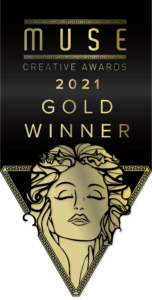The Museum at Capricorn has been living in Jared Wright’s head for the better part of a decade.
While the old Capricorn Sound Studios in Macon, Georgia, has been under various ownership over the years, the intent was always to have some sort of exhibit and museum space. But it wasn’t until Mercer University got involved with the project that the idea would become a reality.
“I’ve been researching and writing and doing all that exhibit preparation for so long,” said Wright, a Macon-based curator and archivist who has been working on the project for about 10 years. “I can’t wait to see what it’s actually going to look like.”
That day is almost here. After a Dec. 2-3 grand opening, the Museum at Capricorn will officially open to the public on Jan. 2 as part of the larger Mercer Music at Capricorn. In addition to the museum, the nearly 20,000-square-foot complex will feature recording studios and a music incubator, as well as offices, co-working space and meeting rooms.
The original Capricorn Sound Studios defined the Southern rock genre of the 1970s, birthing legends such as the Allman Brothers Band, the Marshall Tucker Band, the Charlie Daniels Band, Wet Willie, Elvin Bishop and many others. The new Mercer Music at Capricorn will build on and celebrate that legacy.
The 1,200-square-foot Museum at Capricorn will feature artifacts, murals and interactive digital kiosks.
The interpretive area will explore various themes in Capricorn’s history, beginning with soul music.
“Before you talk about Capricorn, you actually have to talk about soul music in Macon in the ’60s, obviously led by (soul musician) Otis Redding,” Wright said.
Before Redding’s tragic death in a plane crash in 1967, local booking agent Phil Walden — along with his brother Alan Walden, Redding and local engineering student Jim Hawkins — had purchased a building in downtown Macon with the idea that it would serve as a sound studio.
After an initial uncertain future following Redding’s death, Phil Walden turned his energies toward the construction of a record label and bought Duane Allman’s contract from FAME Studios.
“And he was really the first signee, and that eventually ended up as The Allman Brothers Band,” Wright said. “And the rest is history.”
The interpretive area will explore what is “Southern rock” and what defines the “Macon sound.”
“Southern rock is a bit of a loaded term. The people who were making music here didn’t really see it as Southern rock or as part of a genre,” Wright said. “Mostly it’s sort of deep Southern soul and kind of good ole boy rock and roll, but they never really labeled it Southern rock.
“They were just doing what they did.”
And while music fans may hear people talk about the “Muscle Shoals sound” or the “Nashville sound,” there’s also a distinctive “Macon sound,” Wright said.
“People like Johnny Sandlin, who was part of the studio band but later became an engineer and producer, he was a drummer, so there’s a really distinct drum sound that comes out of this studio,” Wright said. “There’s a really distinct bass sound that comes out of this studio.”
Digital interactives, including letters, photographs, office correspondence and music, will allow visitors to explore the museum at their own pace.
“You can actually pull up a record out of the bin, the digital bin, and flip it over, read the liner notes,” Wright said. “Say Johnny Sandlin was in the liner notes to this record that you like. You can click on his name, see a bunch of photos of Johnny Sandlin, see other things on the label that he was involved with.
“You kind of choose your own adventure … with these digital interactives.”
The museum also will house physical artifacts, including posters, concert tickets and other ephemera left over from the record label.
“Some of my favorite are the posters,” Wright said. “Capricorn had a really great design team, and their marketing department was really cool and really on top of it.”
The museum will be open 11 a.m.-7 p.m. Tuesday-Friday and 10 a.m.-6 p.m. Saturday. In addition, studio tours will be available 10 a.m.-noon Saturdays only. Admission is $7 for the museum and $5 for a studio tour.
Even after opening, the museum will continue to evolve in its telling of the Capricorn story.
“We hope that people come back and every time that they come, be able to discover something a little bit different, go down a slightly different path than they did before,” Wright said.



